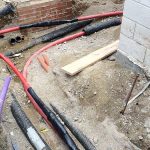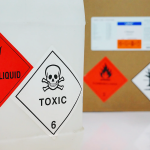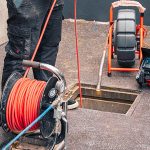Understanding the Septic System: How It Works
Septic systems are indispensable where no central sewage plants cater to waste in the country and suburban areas of Australia. Upholding proper septic tank cleaning services minimises the raw waste within the household and enhances waste treatment. New trends in liquid waste treatment recommend upgrading and maintaining the systems so as not to pollute the environment.
The Basics of Septic Systems
A septic system is a basic method of treating sewage in a house or business that does not have a direct connection to a sewage system. The two common components of most septic systems are the septic tank and the drain field. Wastewater from toilets, sinks, and showers first goes to the septic tank, where it collects solid waste sludge at the bottom while light substances like oil and grease float atop, creating scum.
Microorganisms below the layer of organic matter decompose the organic materials, enabling the liquid effluent to pass into the drainfield, where the soil absorbs it and further assimilates naturally. According to the latest survey by the notified Liquid Waste Industry Association of Australia (LWIAA), “80% of the rural Australian population households still use septic tanks for wastewater management”. Regular maintenance and proper care would enhance the durability of septic tanks and minimize the expensive repairs.
Major Problems with Septic Systems
Septic systems last for decades; however, lack of maintenance and any abuse may lead to problems that call for costly repairs. Impermissible foul or drain field failures, septic tank blockages, and tank leaks are among the prevalent ones that will eventually result in groundwater pollution. According to the Australian Institute of Environmental Health (AIEH), “40% of the septic system failures are attributed to lack of proper maintenance and improper use, adding on average a repair cost of $10,000 per household to the problem”.
One such common mismanagement is the elimination of fats, oils, and grease (FOG), which usually results in septic system problems. If allowed to enter the sewer system, FOG will harden and, together with other waste, will create a blockage that will prevent free flow in the system and introduce risks of system overflow. Experts recommend people to avoid flushing synthetic items, conserve fixtures in their homes, and have the septic tank pumped every three to five years.
Septic system expert John Williamson from Septic Pro Australia says, “Homeowners need to be proactive with septic system care. Regularly pumping the system and monitoring its waste can significantly extend its lifespan.”
The ISO Sodo Waste Water Disposers
As Australia strives to reduce landfill waste, researchers and engineers have developed better technologies for septic management. There are new trends within the last few years that have gained acceptance and popularity, such as aerobic treatment units (ATU). Aerobic treatment units add air to the processes that clean out septic tanks to help the waste in the effluent break down. This makes the effluent less harmful to the environment. Other systems also use tertiary treatment effluent denitrifiers, which help to reduce soil nitrogen leaching, preventing soil and water pollution.
As submitted by the Department of Agriculture, Water, and the Environment, “about 30% of new septic systems being approved today incorporate advanced treatment technologies”. For the rest, these devices are more expensive in terms of sales, and we justify our long-term applications by focusing on water dehydration and soil preservation.
City and Shire Councils always prepare to tackle the challenges of changing times, from risky residential septic practices to eco-friendly ones. Wherever they are available, residents can find out what kind of system best suits their property and have it designed to comply with the new regulations.
However, many houses and companies in Australia still rely on septic systems as waste management options. Gaining knowledge about how these systems function, identifying more common issues, and being aware of new products on the market may prevent high repair costs and enable homeowners to use their systems effectively. Environmental concerns are becoming a priority in Australia’s development of septic systems. This spells good news for every sector, as pollution levels will be minimised.
Complying with basic operational requirements and performing routine maintenance on their systems can also assist homeowners in proper sewage system management and mitigate the health and environmental hazards associated with poor waste management systems.
Contact Clarence Valley Septics Today
Ensure that your business meets the highest standards of responsibility and compliance. Partner with Clarence Valley Septics and protect your business, safeguard public health, and contribute to a sustainable future. Contact us today on +61 2 6645 3100 or via our website.


